#dr. neff
Explore tagged Tumblr posts
Text

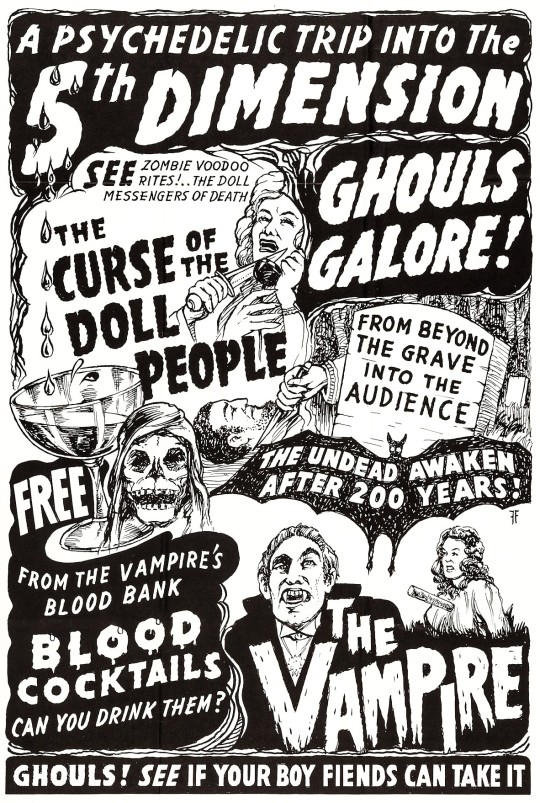
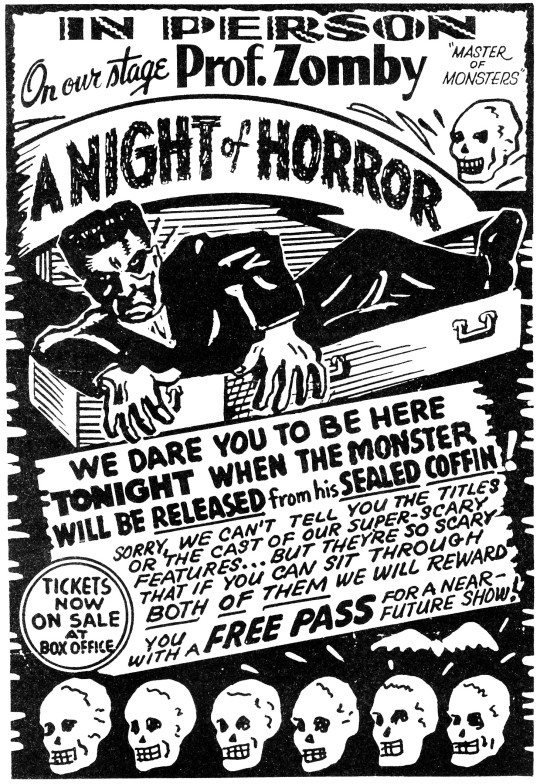
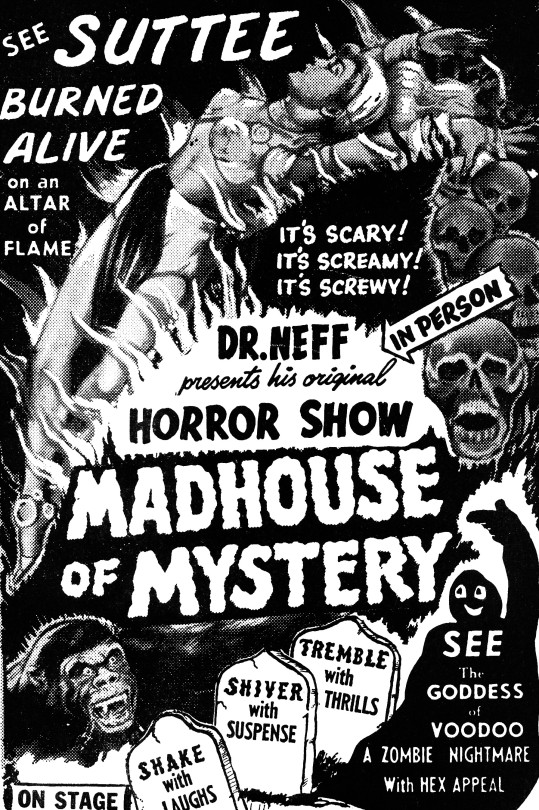



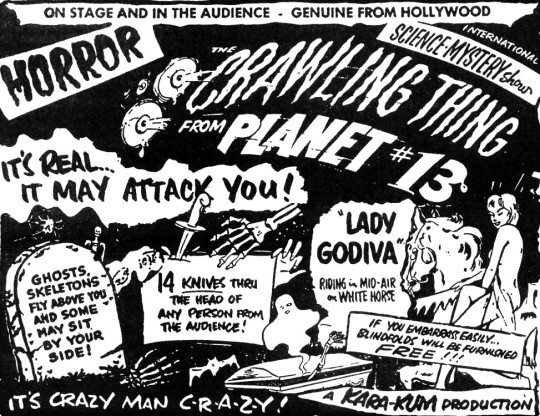

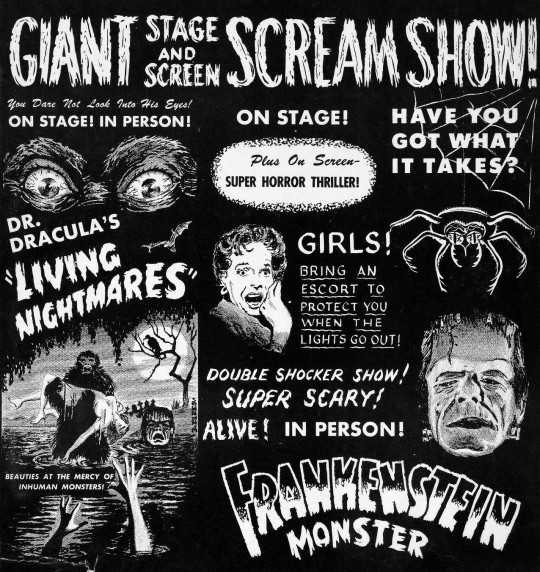
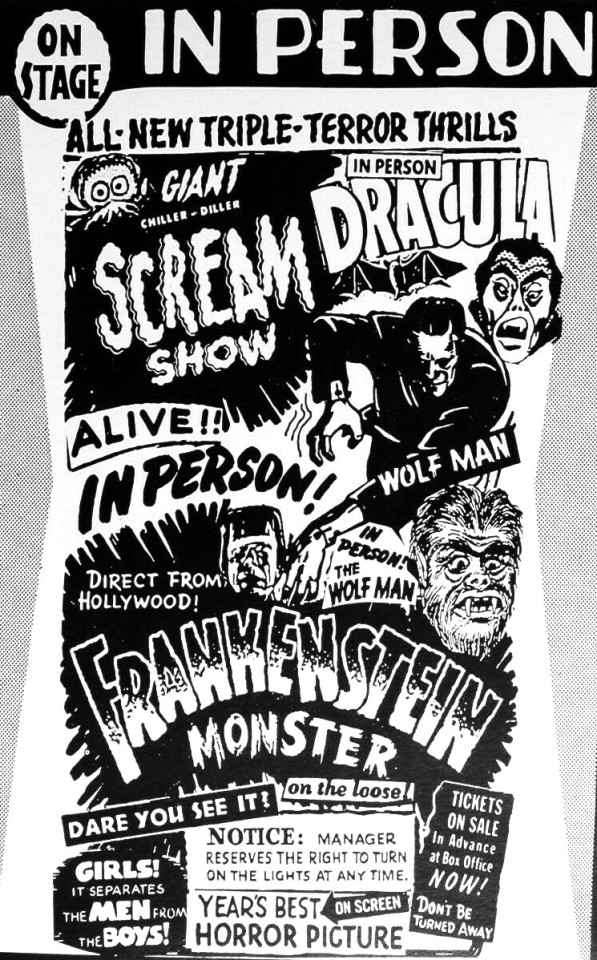
1950s-1960s Spook Shows
#spook shows#midnight horror shows#midnite ghost shows#vintage spook show posters#horror art#ghouls#undead#vampires#chamber of horrors#prof zomby#dr neff#dr silkini#1950s#1960s
428 notes
·
View notes
Text
.❤️.
.
#awareness#healing#self compassion#self love#self awareness#Dr. Kristin Neff#avoidant attachment#attachment styles#healing relationships
2 notes
·
View notes
Text



❥﹒♡﹒☕﹒ 𝘄𝗵𝘆 𝗮𝗿𝗲 𝘆𝗼𝘂 𝗮𝗳𝗿𝗮𝗶𝗱 𝗼𝗳 𝘆𝗼𝘂𝗿 𝗼𝘄𝗻 𝘁𝗮𝗹𝗲𝗻𝘁?
have you ever noticed how quick we are to minimize our accomplishments or hesitate to act on our abilities? this phenomenon is not uncommon and may even have a psychological basis. according to research, fear of our own success is often linked to what psychologists call self-sabotage.
the psychology behind talent-related fear
studies suggest that fear of success stems from deep-rooted insecurities, perfectionism, and societal expectations.
dr. valerie young, an expert on imposter syndrome, explains that highly competent individuals often internalize self-doubt, leading them to feel unworthy of their achievements. instead of viewing success as an opportunity, they see it as a risk — a chance to be judged or exposed.
additionally, behavioral scientists highlight how comfort zones act as psychological safety nets. breaking out of this zone to pursue one’s potential often triggers the brain’s fight-or-flight response, fueling anxiety and hesitation.
a study published in the « journal of personality and social psychology » found that people often underperform or shy away from their potential to avoid the perceived threats of failure or criticism associated with high expectations.
the cost of playing small
constantly shrinking yourself can lead to a diminished sense of agency, reduced life satisfaction, and even burnout, according to findings in the field of positive psychology. martin seligman’s theory of learned helplessness suggests that repeated self-limitation can reinforce the belief that you are incapable, which ultimately restricts personal growth.
what science says about overcoming this fear
1. reframe your beliefs
imposter syndrome often thrives on fixed mindsets — the belief that our abilities are static and failure is a sign of incompetence. to combat this, psychologists recommend adopting a growth mindset, as outlined by dr. carol dweck. a growth mindset sees mistakes as opportunities for learning rather than proof of inadequacy.
actionable tip: when self-doubt creeps in, question it. ror instance, instead of thinking, “i don’t belong here,” reframe it as, “what can i learn from this experience?” over time, these subtle shifts can transform self-perception.
challenge begative self-talk: replace “i was lucky” with “i prepared well,” or “anyone could do this” with “i worked hard to make this happen.”
2. incremental action
imposter syndrome often paralyzes us because the expectations we set for ourselves feel overwhelming. research shows that breaking large goals into smaller, actionable steps reduces anxiety and builds confidence.
james clear, author of atomic habits, explains that small, consistent actions create a compound effect over time, leading to lasting change.
sart small: take manageable risks in your work or personal life. for example, share one idea in a meeting or take on a small challenge outside your comfort zone.
build evidence of success: each completed task — no matter how small — creates a track record of achievements. over time, this undermines the belief that your accomplishments are accidental.
3. self-compassion
people with imposter syndrome often hold themselves to unrealistic standards. kristin neff’s research on self-compassion shows that treating yourself with kindness during moments of failure or doubt can reduce stress and enhance resilience.
self-compassion involves acknowledging your struggles, understanding that imperfection is human, and responding to yourself as you would to a friend.
practice self-kindness: when you make a mistake, instead of saying, “i’m so incompetent,” try saying, “everyone makes mistakes, and i can learn from this.”
normalize imperfection: remind yourself that even the most successful people have moments of doubt and failure.
self-care as a tool: engage in activities that recharge your mental and emotional energy, whether that’s journaling, meditation, or spending time with loved ones.
by reframing your beliefs, taking small steps, and showing yourself compassion, you can gradually dismantle imposter syndrome. remember: confidence is not the absence of doubt but the decision to move forward despite it.
#college#education#school#academia#student#study aesthetic#study blog#study inspiration#study motivation#note taking#motivating quotes#motivation#imposter syndrome#self love#self love affirmations#psychology#academic overachiever#dark academia#academic weapon#academic validation#study abroad#studying#study notes#self improvement#self care#university life#uni life#university#student life#study community
212 notes
·
View notes
Text
Double Indemnity, Spellbound and how a retroactive plot twist kicked the communities ass (which also has some VERY interesting implications for Aventio)
I had a very enlightening conversation on TikTok about the nature of these two romance/thrillers, and while unfortunately, I have no idea how to watch them, the plot synopses I’ve seen and analysis other people have made have caused me to come to this conclusion/interpretation of these references:
On the first viewing of the Double Indemnity questline, the reference to the DI movie is meant to be played straight, with Aventurine and Ratio being just as doomed to fail as they are in the movie, and their relationship as equally as toxic and fake.
On second viewing, it’s the complete opposite, and the track (and other movie reference) you receive at the end, Spellbound, proves it.
Let’s start with Double Indemnity.
Also disclaimer I’m gonna be over simplifying the plot/themes of these movies because a) both are singular references, DI is only referenced in the name of the quest itself and Spellbound is only referenced in a track you receive once you complete DI, and references this small probably aren’t meant to be anything more than a fun Easter egg for those who notice it b) this is hoyoverse they aren’t clever enough for that anyways c) the nature of references isn’t going to be having everything be the exact same anyways, so I’m just going to go with the overall interpretation of DI + Spellbound/their impact, picking the stuff which aligns with the actual plot of the DI quest, I don’t care what happens in one frame at 30:01.56 minutes in and neither do the writers
Anyways, how does the Double Indemnity reference on the first viewing seem?
On our first play through of the Double Indemnity quest, we are made to believe that Dr. Ratio and Aventurine do not trust each other, but they are begrudgingly working together for the sake of stealing Penacony for the IPC. Then, Aventurine makes it seem as if he wishes to use the singer Robin’s- also the sister of Sunday, the head of the Oak Family and the one they are negotiating with- death as a means to pressure Sunday into forking over some of the Family’s secrets, which Aventurine will then use against him in future negotiations.
With this setup, the Double Indemnity reference is a solemn warning- Aventurine and Ratio will fail.
You see, in the movie, Phyllis Dietrechson intends to kill her husband in order to earn the money from the Double Indemnity clause (which is a real legal thing btw!), roping in one Walter Neff when he falls for her. However, their relationship isn’t stable and in the end, Walter betrays Phyllis, ratting her out to the investigator Keyes, ultimately meaning they don’t earn the DI clause, also killing Phyllis in the process.
Hopefully you can already see where I’m going with this, but it’s time to draw some fun parallels.
Sunday is Keyes, Ratio is Walter, Aventurine is Phyliss and Robin is Phyliss’s husband.
Although Aventurine a) isn’t married to Robin and b) he didn’t actually kill her, he is the one who witnessed her “death” and in the first viewing of the Double Indemnity quest, we are made to believe he intends to profit off of it, although this time the payout isn’t money: it’s Penacony.
To do this, he enlists the help of Ratio- albeit not seducing him, but still convincing him to help nonetheless- and together they go to meet Sunday for negotiations.
However, Ratio “betrayed” Aventurine, ratting him out to Sunday behind his back and informing him of his plan, which mirrors how Walter confesses to Keyes. This results in Aventurine being sentenced to death, much like how Phyllis dies by Walter’s hand, Aventurine seems like he will die by Ratio’s, calling him a wretch before slinking off.
And there you go, their partnership is as doomed as the one in the movie, failing because their trust + love didn’t hold up till the end, a devious foreshadowing.
At least, that’s how it seems on the first playthrough.
Because Aventurine and Ratio’s plan SUCCEEDS.
And on the second viewing, knowing that the betrayal is fake, you realize they succeed because they do the one thing the people in DI (and I’ll get to Spellbound) DONT do- they actually TRUST each other.
Ratio and Aventurine’s plot is a success. And it’s because they deliberately made it seem like they were doing a Double Indemnity plot. Like they were going to make the same mistakes as the characters in the movie. Sunday falls for the false appearance hook, line and sinker, and that’s his downfall.
They win because they TRUST each other, you can even say because they actually LOVE each other, unlike the characters in the movie, where it’s more list than anything else. Walter and Phyllis don’t make it together to the end but Ratio and Aventurine DO, and they get to continue on with their lives because of it. The reference to Double Indemnity in this quest is genius because it works both before and after you learn the retroactive twist of Penacony. It makes you believe Aventurine + Ratio are doomed to fail, and it makes you realize they were always going to succeed, expertly dawning the false appearances Sunday expects from them, becoming literal actors playing out the roles of two people who will fall short due to their selfishness. Sunday believes he’s seen this film before which is why he BUYS IT, and god it’s just beautiful looking back on it. He thinks he’s Keyes about to uncover a dastardly plot to profit off his sisters death, and in turn he paints Ratio and Aventurine with the identities of those he believes would do such a thing, which they do their best to play into. Ugh it’s amazing.
And now, for Spellbound.

You receive this track after completing Double Indemnity, containing the description above.
Now, this is a reference to Spellbound, another one of Hitchcock’s films.
The main characters in this one are Dr. Anthony Edwards, a man suffering from amnesia, and Dr. Constance Peterson, a psychoanalyst who he was meant to replace, who discovers a dark secret about Edward’s while they fall for one another; he’s an imposter. He believes he killed the real Dr. Edward’s, but she thinks he’s just suffering from a guilt complex. Fake Edward’s goes missing, and the real Edward’s assistant arrived and informs them that he’s missing. She finds Fake Edward again, living under the pseudonym John Brown, and although he tries to leave, she convinces him to stay, telling him that with the help of her mentor, psychoanalysis can help recover his lost memories.
Through an incredibly complicated psychoanalysis of dream, Constance begins to uncover the truth- learning the person who believes himself to be Dr. Edward’s (and is using the pseudonym John Brown) is actually a man named John Ballantyne. Ballantyne accidentally caused the death of his younger brother in the past, resulting in his deep guilt, as well as recalling the location where the real Edwards died- skiing off a cliff to his death. With his memories, they find the body, but it has a bullet wound, so Ballantyne is taken into custody.
However, her boss, Dr. Murchison lets it slip that he actually used to know (and didn’t like) Dr. Edwards, and through another complicated sequence gets him to confess his guilt and ultimately kill himself, which frees Ballantyne, ending the movie with the two going on a honeymoon.
So, what does this mean in the context of the quest line?
Well, let’s say Ballantyne and Constance are representative of Ratio and Aventurine respectively.
“Every psychoanalyst must first have someone else diagnose them.”
If we read Aventurine as the psychoanalyst (Constance) and Ratio as the diagnoser/doctor (Ballantyne), it reveals an interesting interpretation.
That being that they knew the truth from the start/ they had already succeeded.
Or in other words, unlike in Double Indemnity, in Spellbound, they actually succeed.
In the film, Constance is the one doing the diagnosing, the one trying to figure out the truth, and you can see that in Aventurine pretending he’s trying to find out the truth behind Robin’s death. However, in the DI quest, it’s the opposite. Ratio’s as Ballantyne is the one doing the diagnosing for the psychoanalysist, Constance, or rather, Aventurine.
To diagnose someone, you must be very familiar with them, or at the very least the ailment plaguing them, and Ratio he knows Aventurine through and through at the start, and what plagues him (his own sense of meaninglessness) unlike the protagonists in Spellbound who despite falling for one another quickly, don’t begin being intimately familiar with one another.
In this way, they have already succeeded. Aventurine and Ratio already know one another, and while they might not know the reason behind Robin’s death, that was never what they were searching for in the beginning, meaning they effectively can skip through all the drama (aka the ups and downs of Spellbound, finding out the truth behind Robin’s/Edwards’ death), and reach their happy ending- a honeymoon; or in DI’s case, Aventurine attaining his cornerstone, and fulfilling his end of the plan.
Interestingly, Aventurine slots into the role of Ballantyne and Ratio as Constance equally well, with the phone call Constance makes to save Ballantyne being reminiscent of the note Ratio makes to save Aventurine, as well as Aventurine being the replacement, or in the sense, the one to find the truth about Robin.
Personally, I think Aventurine and Ratio are reminiscent of both the main leads in Spellbound, which is why it’s complicated to discern the meaning of the reference. Oh how I wish I knew what the original Chinese description for this was (if you do please tell me 🙏).
Is it just meant to signify them being in love? Is it meant to signify that they will succeed, due to how well they know each other? Is it both, which is what the inclusion of Double Indemnity (the movie) suggests?
Either way, it adds onto the already present idea that the trust between Aventurine and Ratio is what allowed them to succeed in Penacony, and that’s not just something expressed by these movie references.
Think Aventurines Eidolons: Stag Hunt Game and Prisoner’s Dilemma, both of which are game theories about trust. Or how Aventurine says that Ratio knows him best, or how Ratio entrusts Aventurine with close secrets of his, like him being the “Genius” of the council of Mundanites.
“Do you trust me?” “That depends on you.”
These are 2 lines in their 2.0 conversation that really stick out to me. Ratio will always offer his trust so long as Aventurine can prove himself worthy of it, and as we have seen, Aventurine always delivers, proving himself long before Penacony in the Final Victor lightcone, albeit in his weird homoerotic way.
Therefore Ratio will always trust him.
And because of that, they win.
Now whether you take the deep trust between them to be romantic or platonic, or infer the literal honeymoon at the end of Spellbound to mean something for Aventio, either way the feeling absolutely there, and it’s crucial for an understanding of their relationship.
Also damn, the retroactive plot twist fucking slaps.
#hsr#honkai star rail#dr ratio#aventurine#aventio#ratiorine#Sunday hsr#Robin hsr#poor Robin gets mcguffined in this I fear#I need to watch these two movies for real but idk what streaming served would even have them 😭#Thanks Wikipedia for the plot summary ily#Me reading the “the went on a honeymoon” on Wikipedia as the ending for SB 🤨#Aventio honeymoon when#I think it’s romantic but unfortunately I have been bullied into believing the romance in SB is toxic#Even though it’s clear now that any notion of that is just due to Ballantyne’s trauma#I mean they go on a fucking honeymoon#Imo if the film didn’t support them why do that then?#Especially because Ballantyne is innocent#This was so much fun to write#I hope it made sense#Thanks for reading :)
139 notes
·
View notes
Text

Dr. Neff's Horror Show with the CORPSE VANISHES (1942)- 1942
43 notes
·
View notes
Text
The Disney villain book i ordered 3 weeks ago finally came and the sleeve was oily and chafed but at least I get the fabled single paragraph of King Candy insight
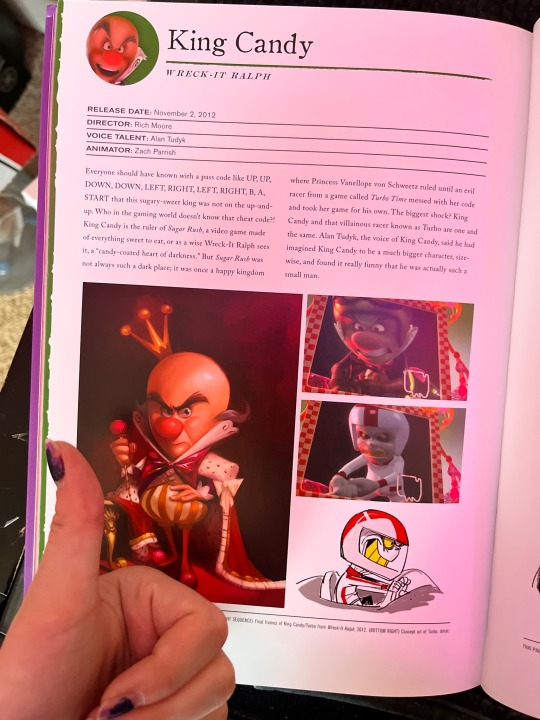
this is truly a game changer
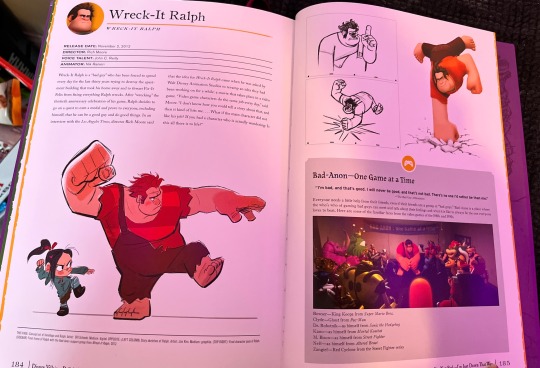
And ralf
[TEXT DESCRIPTION BELOW]
Page 166: Disney Villains: Delightfully Evil.
KING CANDY - WRECK-IT RALPH.
RELEASE DATE: November 2, 2012.
DIRECTOR: Rich Moore.
VOICE TALENT: Alan Tudyk.
ANIMATOR: Zach Parrish.
"Everyone should have known with a pass code like UP, UP, DOWN, DOWN, LEFT, RIGHT, LEFT, RIGHT, B, A, START that this sugary-sweet king was not on the up-and-up. Who in the gaming world doesn't know that cheat code?! King Candy is the ruler of Sugar Rush, a video game made of everything sweet to eat, or as a wise Wreck- It Ralph sees it, a "candy-coated heart of darkness.' " But Sugar Rush was not always such a dark place; it was once a happy kingdom where Princess Vanellope von Schweetz ruled until an evil racer from a game called Turbo Time messed with her code and took her game for his own. The biggest shock? King Candy and that villainous racer known as Turbo are one and the same. Alan Tudyk, the voice of King Candy, said he had imagined King Candy to be a much bigger character, size-wise, and found it really funny that he was actually such a small man."
“Portrait of King Candy. Artist: Clay Loftis. Medium: Digital."
“Final Frames of Turbo from Wreck-It Ralph (2012)”
"Concept art of Turbo. Artist: Jim Kim. Medium: digital."
Page 184: Disney Villains: Delightfully Evil.
WRECK-IT RALPH - Wreck-It Ralph.
RELEASE DATE: November 2, 2012.
DIRECTOR: Rich Moore.
VOICE TALENT: John C. Reilly
ANIMATOR: Nik Ranieri
“Wreck-It Ralph is a "bad guy" who has been forced to spend every day for the last thirty years trying to destroy the apartment building that took his home away and to thwart Fix-It Felix from fixing everything Ralph wrecks. After "wrecking" the thirtieth anniversary celebration of his game, Ralph decides to go on a quest to earn a medal and prove to everyone, including himself, that he can be a good guy and do good things. In an interview with the Los Angeles Times, director Rich Moore said that the idea for Wreck-It Ralph came when he was asked by Walt Disney Animation Studios to revamp an idea they had been working on for a while: a movie that takes place in a video game. "Video game characters do the same job every day," said Moore. "I don't know how you could tell a story about that, and then it kind of hits me. ... What if the main character did not like his job? If you had a character who is actually wondering: Is this all there is to life?" "
Concept Art of Vanellope and Ralph. Artist: Bill Schwab. Medium: digital.
Page 185: Disney Villains: Delightfully Evil.
Story sketches of Ralph. Artist: Jim Kim. Medium: Graphite
Final character pose of Ralph.
Final frame of ralph with the Bad-Anon support group from Wreck-It Ralph, 2012.
“Bad-Anon-One Game at a Time
"I'm bad, and that's good. I will never be good, and that's not bad. There's no one I'd rather be than me."
-The Bad Guy Affirmation
Evervone needs a little help from their friends, even if their friends are a group of "bad guys." Bad-Anon is a place where the who's who of gaming bad guys can meet and talk about their feelings and what it is like to always be the one everyone loves to beat. Here are some of the familiar faces from the video games of the 1980s and 1990s.”
Bowser--King Koopa from Super Mario Bros.
Clyde--Ghost from Pac-Man.
Dr. Robotnik- -as himself from Sonic the Hedgehog.
Kano--as himself from Mortal Kombat.
M. Bison--as himself from Street Fighter.
Neff-as himself from Altered Beast.
Zangief-Red Cyclone from the Street Fighter series.
[TEXT DESCRIPTION END]
#the illustration is the best part#I knew there’d only be a page on him LMAO I’m not mad#I will still read the whole book in full ❤️#wir#wreck it Ralph#turbo#king candy#🐛VIRUS OFFERINGS#Disney villains#Disney villains: delightfully evil#concept art#alt text#book#wir Art Book
182 notes
·
View notes
Text
Reviews of my free ebook have been great, so I'd love to get it to more people!
'Do You Think You May Be Autistic or ADHD? A Neuroaffirming Guide to Exploring Your Neurotype' is 36-pages of info and signposting, much of which may be useful even if you're already sure!
It's totally free, and endorsed by Dr Megan Anna Neff of Neurodivergent_Insights. She shared it with these words below, and has added it to her Neurodivergent Toolbox.

Please feel free to share it with any people or groups who might find it useful!
#neurodiversity#autism#actually autistic#actually neurodivergent#autistic adult#adhd#late diagnosed autistic#neurodivergent#disabled#disability#actually audhd#audhd#audhd problems#audhd things#actually adhd#adhd things#autistic things
14 notes
·
View notes
Text
Managing Autistic Burnout
Two AuDHD mental health professionals discuss burnout and how to handle it in ep 2 of their Divergent Conversations podcast:
PATRICK CASALE: ...You talk about sensory soothing a lot, and you talk about skills and techniques to kind of manage burnout when you're in it. And I'm just curious about things that our listeners — who may not be mental health professionals and may not have access to the things that we do — that they can do when they're experiencing some of this stuff.
DR. MEGAN NEFF: Yeah, yeah. ...I talk about sensory detox a lot, sensory soothing. You have to have some interoceptive awareness to be able to identify when you're sensory overloaded and then soothe yourself. So sometimes you have to actually go back a few steps and kind of work on interoceptive awareness...That sounds like a big thing, work on interoceptive awareness, but there's simple mindfulness things.
Like, I have a smoothie right here, I can grab my smoothie, I can focus on the sensation of the coldness on my hand and what that feels like, I can do that for 10 seconds while I drink my morning smoothie. And by mindfully attending to the sensory experience, putting my smoothie down, noticing the difference in my hand, that's interoceptive awareness builder right there. And it's not an extra I have to do in my day, it's when I'm grabbing my coffee or my smoothie.
...And it often, I think, takes a lot of experimenting, especially for later-in-life diagnosed people and high maskers who maybe are so disassociated from the body by the time they get to diagnosis or identification. It takes a lot of experimenting to figure out, what is soothing for my body? What does my body, like? What doesn't it like?
So, giving yourself a lot of kind of play space to figure that out. Rest, there's lots and lots of rest, dropping demands — and those can be small. Like, sometimes we think, "Well, I can't leave my job." Or "I can't, you know, walk away from my business."
For our family, there's some demands that can always be dropped, for example, family dinner. If someone is having an overloading day they can eat in their room, they can eat in a quiet space. That's an example of a more simple demand drop — or maybe not showering that day. Like, there can be these more simple demand drops. But I think thinking through where can I drop demands.
And spending less time masking. So, figuring out who are the safe people to be around who I don't have to mask as much. Are there things I can say no to? To say no is huge, just like working on boundaries. And then that gets into people pleasing.
...I just spewed off a random list. There's more and I think I have a few blog posts that talk about recovery tips; we can link to that. You're going to get a more linear version of me when I write versus when I talk.
Megan's Resources for Autism and Burnout:
How to Spot Autistic Burnout: https://neurodivergentinsights.com/blog/autistic-burnout-symptoms
What Causes Autistic Burnout: https://neurodivergentinsights.com/blog/what-causes-autistic-burnout
Autistic Burnout Recovery: https://neurodivergentinsights.com/blog/autistic-burnout-recovery
Autistic Burnout Workbook: https://neurodivergentinsights.com/neurodivergentstore/p/autistic-burnout-guide-and-worksheets
73 notes
·
View notes
Text
One thing I learned this year that's really making a difference is hyping myself up. I've never been good at this and it's still new enough that I'm not very consistent with it, but that's how I know that when I do it, I feel far more motivated, I get more satisfaction from doing things, and I just feel more. good. about myself. You know that thing often attributed to ADHD where you don't feel a sense of reward from doing tasks? This has done wonders for me in getting around that.
So what is it? It's basic appreciation practice, and it can look like anything from mentally cheering and clapping for yourself when you get up off the couch to make some toast, to a quiet whispered 'good' while you're doing the dishes. It sounds so simple and kinda like it shouldn't have taken me 27 years to learn, but I can't discount it when it has literally, repeatedly made the difference between lying in bed all day feeling inadequate and wondering why I can't just want to do something good for myself, to having a normal day where I eat and run the dishwasher and pick up a thing or two off the floor and go outside and feel like an ok human being.
What it does for me, is it takes up the space where I would normally be berating myself for taking so long to do the thing, or thinking about all the things I haven't done and probably won't get to and how I'll feel bad when I eventually do them, too... very fun, motivating stuff as you can see. If the first thing I think when I get up to do a task, while I'm doing the task or immediately after (or any point in the day I think about the task) is a positive, appreciative thought, it doesn't leave as much space for the negative. And I also find that the negative, when it does appear (because old habits die hard), has less purchase; it becomes more of a passing thought than an affirmation of a deep-held belief about myself.
I'm really not saying anything revolutionary here, but if you're like me and struggle with doing basic maintenance let alone things you enjoy, and kinda feel like a piece of shit most of the time, and the idea of praising yourself for taking out the trash chafes against some part of you that believes you don't deserve it, that it would be somehow too much, too self-aggrandizing and kinda gauche, you might need this. If you need something more structured to get started, I can recommend a week of daily journalling or otherwise reflecting over prompts like:
What did I do well today?
Why was it good? (e.g. it had a positive impact on me/others, it was important etc.)
How was it good? (what thoughts, emotions and sensations/energy did I have - this one is to make it easier for you to recognize and reproduce positive states in the future, I struggled with it but ymmv)
I also recommend mindful, self-compassionate reflection over the things that are difficult and would otherwise just become part of your "I suck" thought cycle. I modeled mine after this: Dr. Kristin Neff journal exercise and did it every night for a week. It took some practice to really get into the emotional nurturing of it and not just repeating platitudes at myself (and a surprising amount of energy - don't do this when you're halfway asleep), but I was surprised at how much I could change my state of being with my own words. If podcasts and meditation are more your thing, look up Tara Brach RAIN technique.
All this may not be a necessary step for you, it's just what got me set up to do the daily, minute-to-minute self appreciation that hopefully in time will become second nature.
To finish, a few more examples of appreciative thoughts:
I'm doing a good thing; this is good
Nice / good job / well done / hell yeah/ awesome / way to go
Thank you(me) for doing this
I'm so glad I'm doing/I did this*
*Sometimes, negative thoughts can creep in along with the positive - "because otherwise I would have fallen even more behind" etc. Try to focus on the positive part of the statement, repeat it, put a mental full stop after it, and in time it will be easier.
#self compassion#adhd#motivation#self appreciation#positive thinking#self care#mental health#psychology#feel like such a quack for using these tags but I do genuinely believe this could help someone#mywords
6 notes
·
View notes
Text

Lucien Dodge
Storks, Trolls
Christopher Flowers
Turbo, Pitch Perfect 2, the Secret Life of Pets duology, Sing
Gaille Heidemann
Hotel Transylvania, Dr. Seuss’ The Lorax, Despicable Me 2, Partysaurus Rex, Mr. Peabody & Sherman, Minions, Hotel Transylvania 3
Hannah Johnson
A Bug’s Life, The Angry Birds Movie
Leilani Jones-Wilmore
The Nightmare Before Christmas, the Monsters, Inc. duology, the Finding Nemo duology, Shrek 2, the Cars trilogy, the High School Musical trilogy, Ratatouille, Cars Toons: Mater’s Tall Tales, Up, The Princess and the Frog, Alice in Wonderland (2010), Toy Story 3, The Sorcerer’s Apprentice, The Social Network, Gnomeo and Juliet, Brave, Cloudy with a Chance of Meatballs 2, The Radiator Springs 500 1/2, Annie (2014), Inside Out, The Good Dinosaur, Despicable Me 3, The Boss Baby: Family Business, Sing 2, Hotel Transylvania 4: Transformania, Puss in Boots: The Last Wish, The Super Mario Bros. Movie, Trolls Band Together
J.P. Karliak
The Emoji Movie, The Angry Birds Movie 2
Miles Neff
The Incredibles, Despicable Me
Laura Post
Planes, The Peanuts Movie, Captain Underpants: The First Epic Movie, The Boss Baby, West Side Story
Darrin Revitz
Cars Toons: Tales from Radiator Springs, Auntie Edna, Toy Story 4, Lamp Life, Cars on the Road
#miraculous ladybug#audio description#descriptive video service#marinette dupain cheng#adrien agreste#tikki#plagg#alya cesaire#nino lahiffe#chloe bourgeois#tom dupain#sabine cheng#gabriel agreste#miracuclass#nathalie sancoeur#luka couffaine#kagami tsurugi#wang fu#adrienette#djwifi#delbrina#myvan#julerose#marcthaniel#kimdine#feligami#poll
8 notes
·
View notes
Text
on another note, its interesting to me how with double indemnity, aventurine mainly parallels phyllis dietrichson (the female lead) and ratio walter neff (the male lead), while with spellbound, ratio parallels dr. constance petersen (the female lead) and aventurine the amnesiac j.b. (the male lead).
14 notes
·
View notes
Text
Suddenly very worried that I won't go to my Mindful Self-Compassion course if I take it live on Zoom. Even though I've historically been pretty good at making Zoom appointments, I'm going to dread it all week and I don't want to freak out and stop going halfway through the program. (I appear to have little to no control over whether I freak out and stop going places. I don't know why I can't willpower my way out of that one.) I still think it would be much better for me to do it in a community where I'll have to shamelessly accept myself in front of other people, but this is going to be challenging enough as it is and I might as well buy the self-paced course just so I have room to slip up a few times without falling behind, although I'll try to do it on a strict schedule.
(The self-paced course is also cheaper and I honestly wasn't at all sure if I could manage the cost of the live one, it would have come down to like the cent.)
It looks as if there are some forum communities and like, live group meditations or whatever that I can join and I will just have to do that
EDIT: Oh, here we go, Dr. Kristin Neff who invented and studied this treatment has a community I can join for 17 USD a month, and there are twice monthly gatherings of some kind and some other bells and whistles. So I'll be able to be social about this.
5 notes
·
View notes
Text
Checking out the autistic burnout workbook by dr. megan anna neff and I'm only a few pages into the first chapter, about identifying autistic burnout and the similarities and differences (and overlap!) with depression and describing the symptoms and
that's it that's fucking it
I'm always only a few days away from falling right back into it and it's never-fucking-ending, I used to fall apart every school year right before the winter and summer holidays, after starting school fresh and organized I'd slowly become more and more overwhelmed and tired and BAD until I couldn't cope and would have to beg for extensions and things
and now I do it with my job, I try to take off two days every six weeks and that just about keeps it under control but I rarely get all the way back to good and I really have to watch how much time off I use in order to still have it for migraine days and for the week of camp.
it's like life is a hike, and everyone else hiking it with me is much taller with much longer legs, and in far better shape, and we start out from the same point but I can't keep up, I keep falling behind, and when I finally do catch up, gasping and red in the face, dizzy from lack of oxygen, the group pushes off again, now that I've finally joined them, and it just keeps repeating but worse and worse and worse
and then I trip over an exposed tree root or something stupid that I easily and without thinking could have normally avoided, end up hitting the ground hard skinning my knees and hands, and burst into tears and have an utter meltdown, which then annoys everyone, this is why the hike is adults only, no toddlers, etc.
#anyways taking a break from the workbook but so far huge recommendation here#ty to kate for suggesting it#and ty past me for finally listening to kate#brb need to go stare out across a vast distance while sighing heavily#bad brains blogging#burnout blogging
3 notes
·
View notes
Text
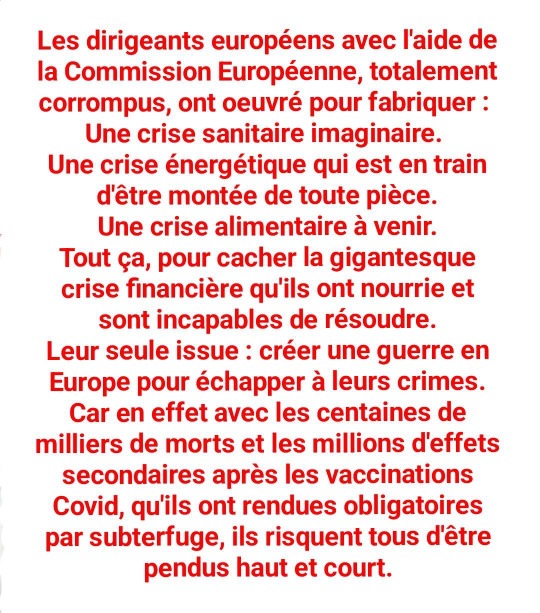
Dr. John Neff ❤️👍😇 : Dans les années 60, il y avait déjà des polémiques sur l'efficacité des vaccins. Cependant depuis 2021, les dommages causés par les vaccins anti Covid19 sont bien supérieurs à ceux du vaccin contre la variole et à ce jour, toujours aucune réaction de la part des autorités sanitaires françaises ou internationales 🙉🙊🙈🐌☠️😢😕





« Comment tout peut s'effondrer. » Quatre ans après la recherche pour ces ouvrages - si non enchanteurs, prophétiques - notre toit coule, nos politiques, whorenalisses et autres pousheurs de "soin$ public$" s'apprêtent à nous remettre une enième couche de groundup, une autre ronde de génocide sioniste et une autre bande de couaccinophiles par en arrière pis dans face et ce, dans un cloaque de corruption inflationniste.
#pablo servigne#comment tout peut s'effondrer#big pharma est toujours en bonne santé#big pharmla#covid&corruption#covid de sens#covid au cerveau#mon ministre est sinistre
12 notes
·
View notes
Text
collaboration spotlight — The Tea by Danny Gonzalez
youtube
Language is always in flux, and one of the more rapidly changing aspects is slang. Every few years, a new wave of words and phrases comes along to express specific concepts in new ways, and befuddle those not in the know. This love song somehow manages to cram most of the late 2010s popular vernacular into just a few minutes, with a tongue-in-cheek delivery that lets the listener in on the joke. The juxtaposition of an upper-crusty tea party as the setting for the video is simply delightful.
Details:
title: The Tea
performers: Danny Gonzalez, feat. Alli Fitz; Drew Gooden & Kurtis Connor (waiters); Chyna Staggs, Cassandra Ariel, Alexa Coelho, Brittany Dobbs Neff, Chris Ross, Michael Cerasoli, Clay DeHart, Daniel Martinez, Melanie Vanderford, & Joey D'Angelo-LaJoie (partygoers)
written & arranged by: Danny Gonzalez
video produced by: PattyCake Productions
release date: 1 June 2019
My favorite bits:
the earnest delivery as they rattle off compliments that will soon become wildly outdated
Danny's deadpan "Yeet."
the actually sweet sentiment behind ♫ "tryna turn you from by bae to my fam" ♫
all the dance trends they included in the video
Alli's vocal skill as she repeatedly navigates between her head and chest registers
the surprise of everyone's wigs slipping off

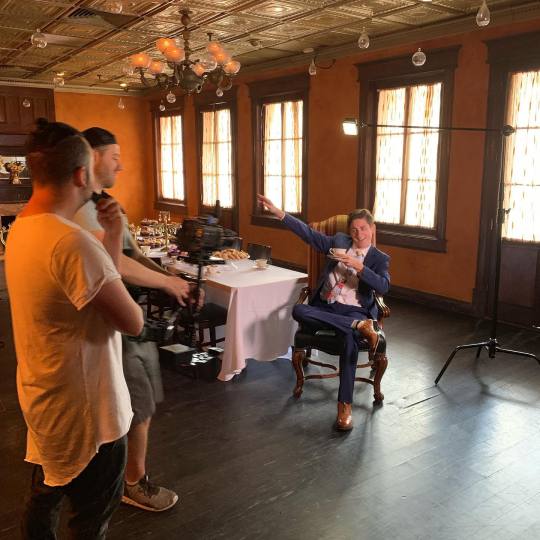



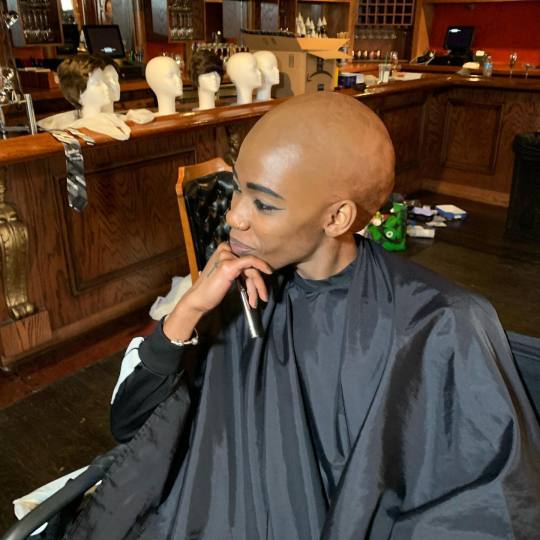
Trivia:
The interior shots for this video were filmed at a tapas bar called Ceviche in downtown Orlando. Layne from PattyCake had also filmed VoicePlay's "Attention" music video at the same location two years earlier.
The audio track was included on Danny's "Bump This" EP, which had been released in late April.
As is often the case with modern slang terms, many of these turns of phrase originated in AAVE, and were then adopted into broader usage, losing some of their nuance along the way.
PattyCake fans might recognize a few of the partygoers. Cassandra Ariel has filled several roles across their series, beginning with Megara in the Princess Academy / Villains Lair crossover episode; Chris Ross plays Dr. Facilier in The Villains Lair; and Joey D'Angelo-LaJoie has been their LaFou since "Beauty and the Bieber".
VoicePlay fans may notice the colored globes in some of the rooftop shots, which Layne also used for their "True Colors" video that was released a month later.
3 notes
·
View notes
Text
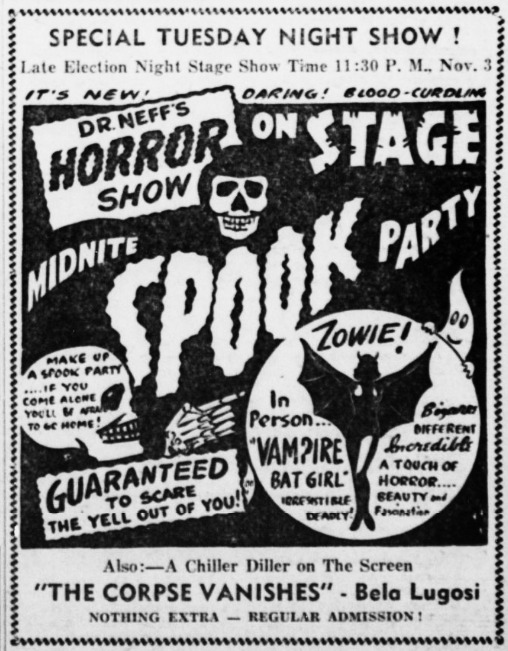
Dr. Neff's Midnite Spook Party and the CORPSE VANISHES (1942)
"Zowie!"
25 notes
·
View notes